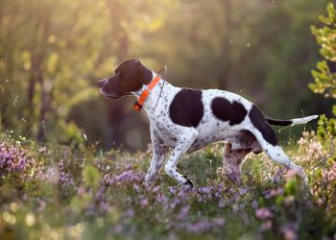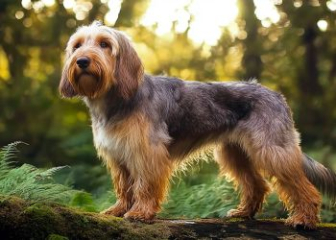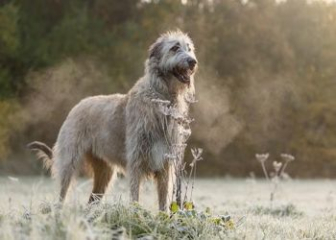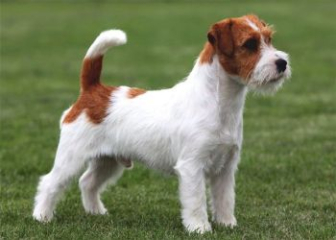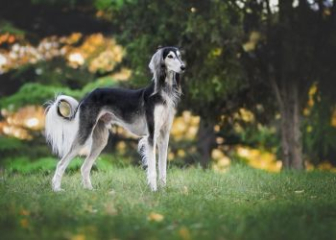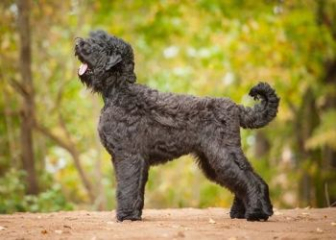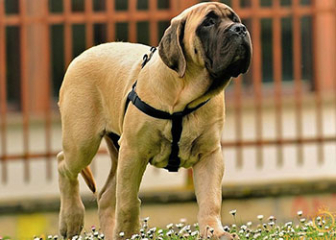Alaskan Malamute – The Giant Sled Dog with an Adorable Appearance
Blog | by
The Alaskan Malamute is a giant dog breed with a soft, fluffy coat, a friendly and lovable personality, and is adored by many.
This breed is known for its large size and thick fur. It is famous for its endurance and strength, capable of pulling sleds at speeds of up to 31 km/h for several consecutive days. Alaskan Malamutes are classified into three types: Standard Alaskan Malamute, Large Standard Alaskan Malamute, and Giant Alaskan Malamute.
If you are looking for information about this incredible dog breed, check out the detailed article below!
Origin of the Alaskan Malamute
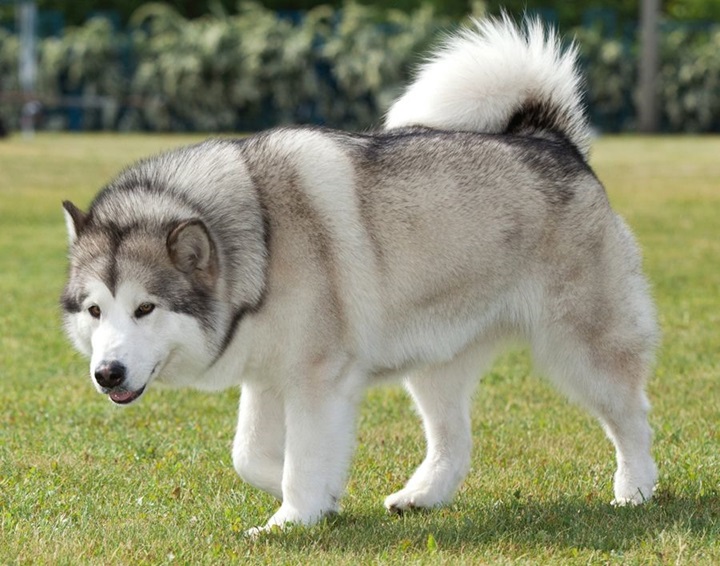
The Alaskan Malamute originates from the United States.
The full name of this breed is the Alaskan Malamute, and it descends from wild Arctic wolves in the U.S. Since its discovery, people have trained these dogs to pull sleds loaded with goods and supplies across snowy terrain. This breed is highly valued for its endurance, capable of running at speeds of up to 31 km/h and covering distances of 32–48 km per day for up to three consecutive days.
The name Alaskan Malamute comes from the Malamute tribe, who brought sled dogs from Siberia (Russia) across the Bering Strait to Alaska, where they were selectively bred to create the modern Alaskan Malamute.
Today, Alaskan Malamutes are commonly kept as pets or guard dogs. They are also imported to various countries, with prices varying based on weight and coat color.
According to the American Kennel Club (AKC) classification, Alaskan Malamutes are divided into three types:
- Alaska Standard: This is the smallest variety, weighing between 30 to 45 kg.
- Alaska Large Standard: These dogs are well-bred with superior genetics, making them larger than the standard type. They have a strong and well-proportioned body with a large, sturdy frame, making them ideal sled dogs for harsh weather conditions.
- Alaska Giant: This is the largest variety, reaching up to 1 meter in height and weighing up to 80 kg. Unlike other dog breeds, which are classified based on coat color, Alaskan Malamutes are categorized primarily by size and weight.
Appearance of the Alaskan Malamute
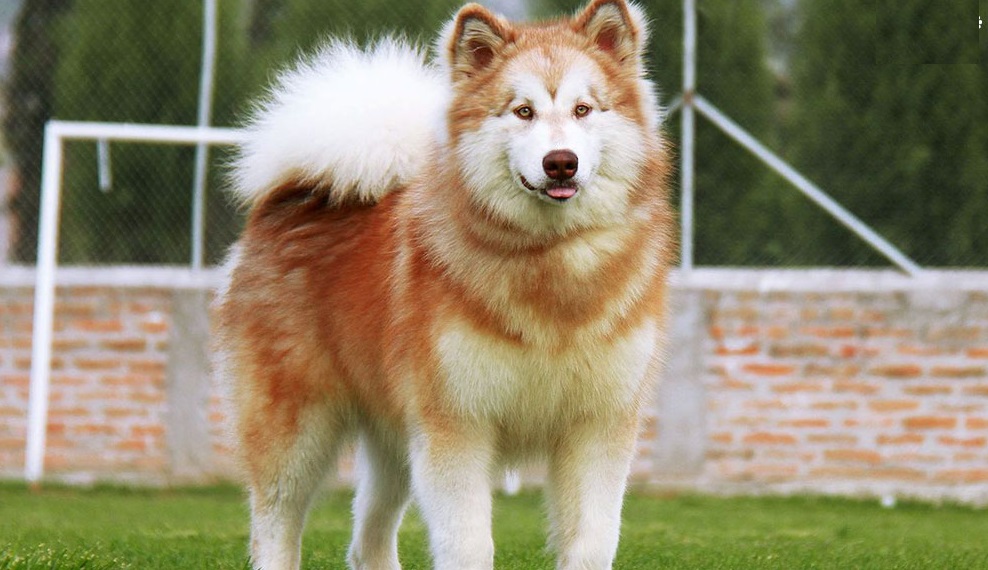
Physical Characteristics of the Alaskan Malamute
The Alaskan Malamute is a giant breed that closely resembles the Siberian Husky, which often leads to confusion between the two. Below are detailed physical traits to help distinguish an Alaskan Malamute:
- Size & Weight: Height ranges from 58 - 80 cm, weight between 34 - 60 kg.
- Head: Large and round.
- Nose: Color depends on coat color and can be black, gray, or brown.
- Face: Features a mask-like pattern due to the contrast in fur color around the eyes, cheeks, and forehead.
- Eyes: Dark brown or amber.
- Ears: Small, pointed, and erect.
- Coat: Double-layered, with a thick, coarse outer coat and a soft undercoat. Common colors include:
- Black & White
- Gray & White
- Red-Brown & White
- Pure White (a rare color)
Personality Traits of the Alaskan Malamute
Alaskan Malamutes are highly affectionate and loyal, making them beloved companions. If trained from a young age, they develop a strong bond with their owner and readily obey commands. Key personality traits include:
- Howling Instead of Barking: Unlike most dogs, Alaskan Malamutes prefer howling to communicate rather than barking. Because of this, they are not ideal guard dogs.
- Intelligent but Stubborn: While highly intelligent, they can be stubborn. Training requires patience and consistency. Once they recognize an owner as their leader, they remember commands well and can learn more advanced tasks.
- Affectionate with Owners: They love to express affection through cuddling, playing, and following their owner. Regular interaction, such as taking them for walks and talking to them, strengthens the bond between dog and owner.
How to Care for an Alaskan Malamute
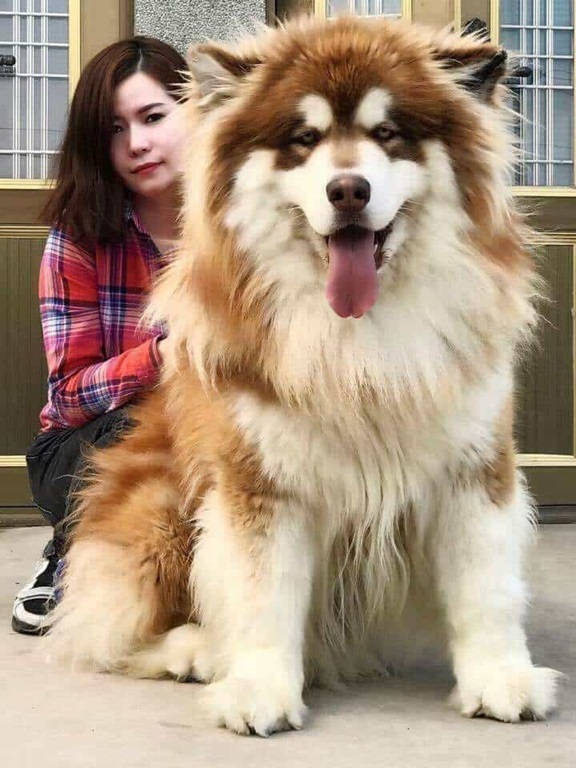
How to Care for an Alaskan Malamute
Alaskan Malamutes originate from snowy, cold regions, meaning that raising them in Vietnam or other warm climates requires special care. Here are essential tips for ensuring their well-being:
Vaccination & Disease Prevention
When you first bring an Alaskan Malamute home, ensure they receive the necessary vaccinations at different stages of growth. Additionally, annual rabies shots and booster vaccinations are highly recommended to prevent common canine diseases.
Diet by Age Group
Feeding your Alaskan Malamute properly is crucial for their growth and health. Their diet should be divided by age, ensuring they receive the right nutrients.
Puppy Stage (3 - 5 months old)
- Feed them 4 meals per day to ensure sufficient nutrition.
- Recommended diet:
- Minced meat (chicken, beef, salmon)
- Rice porridge with meat and vegetables
- Boiled eggs (1 - 2 per week)
- Goat’s milk or specialized puppy milk
Adult Stage (6 months - 1 year old)
- Reduce meals to 3 per day but increase portion sizes.
- Include:
- Protein-rich meats (beef, chicken, salmon)
- Animal organs (liver, heart, lungs)
- Carbohydrates (sweet potatoes, rice, oats)
- Vitamins & minerals (can be supplemented if necessary)
- Chewable animal bones (for jaw strength)
Foods Alaskan Malamutes Should & Should Not Eat
✅ Recommended Foods
- Proteins: Beef, chicken, lamb, salmon
- Organ Meats: Beef heart, pork liver, chicken lungs (only 2-3 times a week)
- Dairy Products: Goat’s milk, cheese
- Vegetables & Fruits: Carrots, pumpkins, cucumbers, apples, bananas, strawberries
- Carbohydrates: Brown rice, oats, sweet potatoes
❌ Foods to Avoid
To prevent illness, poisoning, or digestive issues, avoid feeding them:
- Chocolate & cocoa (can cause heart disease)
- Grapes & raisins (can cause kidney failure)
- Fruit seeds & pits (contain toxins)
- Cow’s milk (can cause diarrhea)
- Greasy, overly spicy, hot, or cold food
- Extremely hard bones (may damage teeth)
Grooming & Hygiene
Alaskan Malamutes have a thick double-layer coat, requiring proper care to keep it soft and healthy.
- Bathing: Use specialized pet shampoos and dry their coat thoroughly after bathing.
- Brushing: Brush their fur 2-3 times per week to prevent matting and excessive shedding.
- Ear & Eye Cleaning: Regularly clean ears and eyes to prevent infections.
- Nail Trimming & Dental Care: Trim nails and brush teeth to maintain cleanliness.
- Professional Grooming: Consider dog spa services for extra care.
Exercise & Training
Alaskan Malamutes are high-energy dogs that require daily exercise to stay healthy.
- Ideal environment: Spacious yards or large areas to run freely.
- Minimum exercise: 1 - 2 hours per day (walks, jogging, or playtime).
- Mental stimulation: Training & interactive games to prevent boredom.
Common Health Issues in Alaskan Malamutes
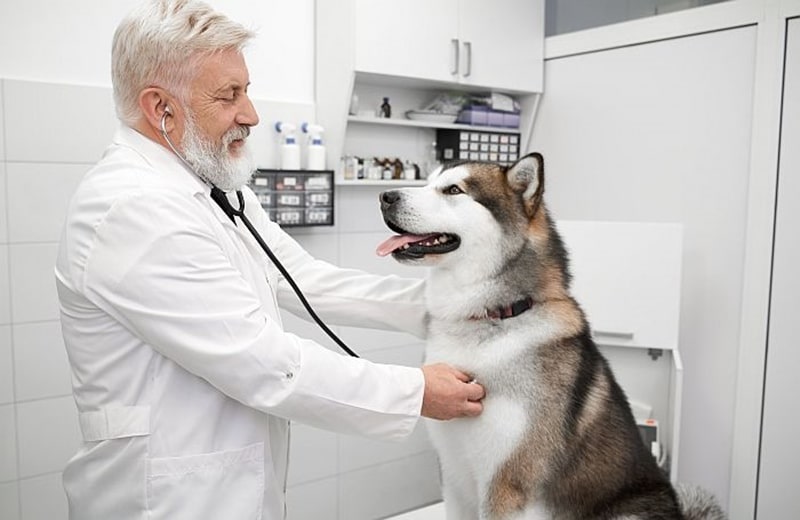
Alaskan Malamutes should be monitored and undergo regular check-ups to prevent certain dangerous diseases.
Below are some common diseases that Alaskan Malamutes may suffer from. Knowing about these illnesses will help you provide proper care if your dog gets sick, ensuring a faster recovery.
Gastrointestinal Diseases
- Causes: Dogs may develop digestive issues if they consume spoiled food, drink contaminated water, or become infected with bacteria, viruses, or intestinal parasites.
- Symptoms: The dog may appear fatigued, less active, and experience diarrhea, which may contain blood or mucus.
- Prevention: Provide clean, fresh food and water.
- Treatment: Give the dog electrolyte solutions or diluted Oresol to prevent dehydration. If symptoms persist, take the dog to a veterinarian immediately.
Hip Dysplasia
- Causes: This condition can be hereditary or caused by excessive physical activity during puppyhood, joint dislocation, calcium deficiency, or excess body weight putting pressure on the hip joint.
- Symptoms: Pain when touching the hip area, limping, difficulty walking.
- Prevention: Feed the dog calcium-rich foods such as fish and eggs to strengthen bones. Avoid overfeeding to prevent excessive weight gain, which can strain the joints. Do not allow young dogs to engage in strenuous physical activities.
- Treatment: If the dog shows signs of hip dysplasia, take it to a veterinary clinic for a proper treatment plan.
Cataracts
- Causes: Cataracts are common in aging dogs and can also be caused by genetics or a diet lacking vitamin A.
- Symptoms: Blurred vision, frequent collisions, cloudy or opaque eye lenses, frequent eye rubbing.
- Prevention: Keep the dog's eyes clean and feed them vitamin A-rich foods such as carrots and animal liver.
Heatstroke and Heat Exhaustion
- Causes: Alaskan Malamutes are prone to heatstroke when they engage in prolonged physical activity in hot weather or do not drink enough water.
- Symptoms: High body temperature, rapid breathing, dark red tongue.
- Prevention: Avoid letting the dog play outside in the midday sun for long periods.
- Treatment: Immediately provide clean, cool water, and move the dog to a shaded, cool area.
Skin Infections and Allergies
- Causes: Since Alaskan Malamutes originate from cold climates, they are more prone to skin infections and allergies in hot, humid environments. Their thick fur makes them susceptible to parasites such as mites, fleas, and ticks.
- Symptoms: Dandruff, red rashes on the skin.
- Prevention: Regularly bathe and groom the dog, and use flea and tick treatments.
- Treatment: Shave affected areas and apply specialized medication as directed by a veterinarian.
Ear Infections
- Causes: Ear infections are common in dogs living in dirty environments where dust accumulates in the ears, creating an ideal environment for bacterial growth.
- Symptoms: Bad odor from the ears, yellow or brown discharge.
- Prevention: Clean the dog's ears regularly and wipe them dry after bathing.
- Treatment: Take the dog to a veterinarian for appropriate treatment.
Obesity
- Causes: Alaskan Malamutes are large dogs with a strong appetite. If they consume too many carbohydrates and fats without enough exercise, they will gain weight rapidly.
- Symptoms: Uncontrolled weight gain beyond the normal size for their breed.
- Prevention: Divide meals into appropriate portions throughout the day. If the dog gains excessive weight, reduce carbohydrate and fatty food intake and ensure at least 1–2 hours of exercise daily.
- Treatment: Adjust the dog's diet and encourage regular physical activity.
Reference Price List for Alaskan Malamutes
Currently, there are many different types of Alaskan Malamutes on the market. Prices depend on factors such as origin, color, size, and age. Below is a compiled price list:
| Color | Price | Origin |
|---|---|---|
| Black and White | 8 million VND | Vietnam |
| Gray and White | 9 million VND | Vietnam |
| Red Brown | 14 million VND | Thailand |
| Pinkish Brown | 15 million VND | Thailand |
| Snow White | 50 million VND | USA |
| Giant Alaskan Malamute | 80 million VND | USA |
Frequently Asked Questions about Alaskan Malamutes
How much does an Alaskan Malamute cost?
The price varies based on color and origin, ranging from 8 million to 100 million VND.
Where can I buy an Alaskan Malamute?
You can buy one from reputable pet stores, breeders, or online marketplaces.
Beautiful Alaskan Malamute Images
If you love this giant sled dog, take a look at some stunning images of Alaskan Malamutes we have gathered below!
.jpg)
Alaskan puppies with adorable appearance.
.jpg)
White Alaskan dog with snow white fur is very rare.
.jpg)
Giant Alaskan dog.
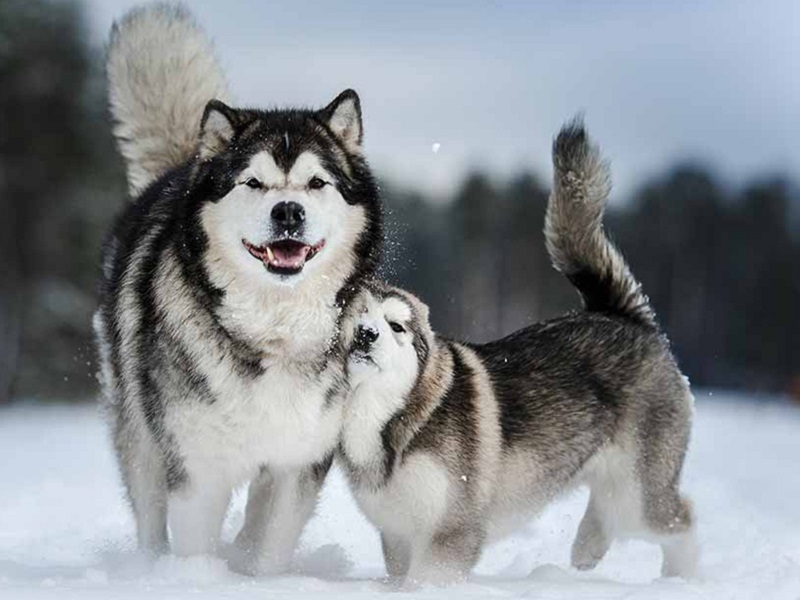
Mother Alaskan dog and her puppy in the snow.
The article above from dogbreed.wiki has shared information about the Alaska dog breed, including its origin, personality, care, and feeding methods that you need to know when raising this sled dog breed. Hopefully, the information provided will be helpful to you.
Don't forget to visit our website regularly and check out our Blog for more articles to learn about even more dog breeds!

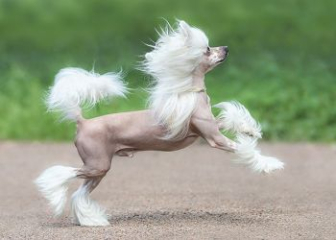
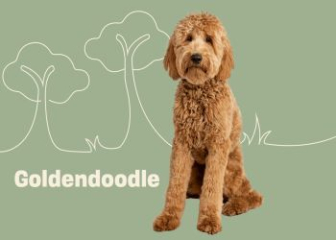
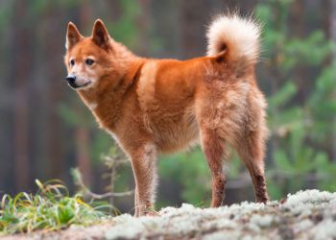

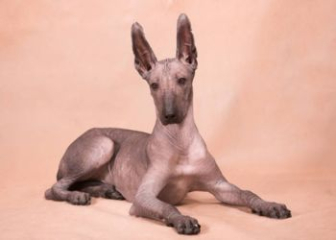
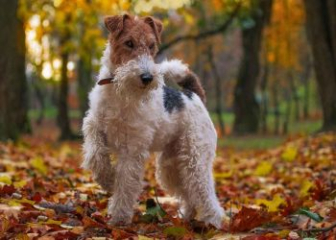


_350x250.jpg)

